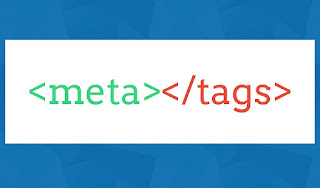SEO Facts: Top 10 Meta Tags for Blogs and Websites

Meta Tags and Why to Use Them?
Meta tags are textual snippets used to define the website contents. Meta tags are used to provide the deep information about the website's content to search engines. Like any other tag, that tags do not appear on the page where used. Meta tags are added to the <head> section of HTML web page. There are many meta tags with different attributes used to define many different aspects. Such as content's description, keywords, author's info is defined by using the meta tags. We can say that meta tags define "data about the data" that a website or web page holds. Use of meta tags is a quite good practice to fulfill a very basic SEO phase. In that article, we will discuss the Top 10 meta tags that must be used on any blogger/website to fulfill a basic SEO phase perfectly.
Read Also: Important SEO Pack for Blogger: Alternative Yoast SEO Plugin
How to Use Meta Tags in Blogger/Website?
In any website, meta tags can be used under <head> section in HTML mode. Meta tags can be used on every single HTML page manually.
<meta name="description" content="..."></meta>
<meta name="keywords" content="..."></meta>
<meta name="author" content="..."></meta>
In blogger, we can set the Meta tags similarly as mentioned above.
10 Different Meta Tag Attributes That Are Must Be Used & Necessary for Spectacular SEO in Real:1. Description Meta Tag
The description is the short textual snippet that defines our website or a web page when it appears in search engine's search result. In blogger, there is the default option to set the description for every single post. So go for it instead of using that tag.
<meta name="description" content="...">Your-description-goes-here</meta>
The material under the blog title is defined using meta tag of description attribute.
2. Keywords Meta Tag
<meta name="keyword" content="...">your-keywords-goes-here</meta>
Meta tag with keywords attribute is used to declare the keywords of your content. You are able to declare more than one keyword using a comma sign (,) after each, under quotation marks.
3. Author Meta Tag
<meta name="author" content="author name">author-attribute-goes-here</meta>
Claim your website's or contents' authorship by using that meta tag attribution. If you have any web author for your website, you can declare that by replacing "author" with "web_author".
4. Title Tag
That does not actually look like meta tag but it works the same. It has the great impact on SEO factor. Crawlers read the title first. If you declare the title of your content properly, it will be a quite beneficial practice.
<title>Website/blog title goes here</title>
In blogger, there is the built-in option to set the Title for every post individually.
5. Robots Meta tag
Meta tag with robots attribution is used to tell the crawlers/spiders whether you want to let them index your web page or not. The ideal meta tag with robots attribute is here below:
<meta name="robots" content="index, follow">robots-name-goes-here</meta>
Index declaration indicates that you want to let the crawlers see your web page and declaration indicates that you want to let the crawlers index your whole web page and all the other web pages linked there.
<meta name="googlebot" content"...boot-name-goes-here ..."></meta>
6. Copyright Meta Tag
<meta name="copyright" content="owner's name">owner-name-goes-here</meta>
Claim your ownership using that tag. It does not impact the SEO factor practically.
7. Language Meta Tag
Language meta tag defines the language of your blog/website
<meta name="language" content="en"></meta>
It is quite important to declare the natural language of the website or web page in which that is indexed every time.
8. Viewport Meta Tag
Initially, the websites were designed for the Computer or bigger displays only. With the passage of time, the users started to browse the websites on tabs and cell phones. Still, the websites were struck to their cultural layout with fix height and width. It was quite tough to browse the website with that sticky layout on tabs and cell phones. So that meta tag was introduced to give a portable layout to any website on tabs' or cell phones' displays.
<meta name="viewport" content="width=device-width, initial-scale=1, minimum-scale=1, maximum-scale=1"></meta>
9. Content-Type Meta Tag
Meta tag with that attribution is used to declare the character encoding of the document.
<meta http-equiv="Content-Type" content="text/html; charset=UTF-8"></meta>
10. Generator Meta Tag
The meta tag with generator attribute is used to specify the web builder. Declare the actual builder using which you develop a website i-e blogger developers will use the tag as defined below:
<meta name="generator" content="blogger"></meta>
Using these meta tags will increase your online presence on search engines.




Jinke Andar Apne Code Rakha Hai Vo Box Kaise Banate Hai?
ReplyDeletePlease visit Stylish Blockquote Designs for Blogger
Delete